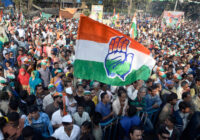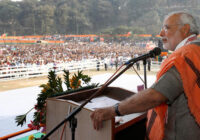Today, many scholars find democracy in danger. Social and political polarization has risen. January 6, 2021 in the US and January 8, 2023 in Brazil stand as real life examples of the risks of discord in democracies. In both these deeply divided countries and many others, a significant section of the population is losing faith in democracy. These two countries are not alone. Faith in democracy has eroded in many countries.
A few decades ago, things were very different. In 1989, thousands gathered in Tiananmen Square and at the Berlin Wall. In 1991, the Soviet Union collapsed. The same year, Samuel P. Huntington published The Third Wave: Democratization in the Late Twentieth Century, describing the global trend towards democratization. More than 60 countries in Europe, Latin America, Asia, and Africa had experienced democratic transitions since Portugal’s “Carnation Revolution” in 1974.
A Resilient Democracy
Many forget that Indian democracy predates this post-1974 democratic transition. Since 1947, India has been a diverse, dynamic and resilient democracy. In 1957, the southwestern state of Kerala elected communists to power. These communists have survived the fall of the Soviet Union and won the most recent election in Kerala. Ten years after the 1957 communist victory in Kerala, its eastern neighbor Tamil Nadu elected a regional party, the Dravida Munnetra Kazhagam (DMK). Since 1967, Tamil Nadu has always been run by a regional party. The current chief minister of the state is the DMK leader M.K. Stalin, named after none other than the Soviet leader Joseph Stalin.
India has a whole host of parties that jostle for the affection of its 1.4 billion population. In Punjab, a western state that borders Pakistan, the new Aam Aadmi Party (AAP) is in power. In West Bengal, an eastern state that borders Bangladesh, the Trinamool Congress (TMC) is in power. Both the AAP and the TMC beat the ruling Bharatiya Janata Party (BJP) in their respective state elections. The Indian National Congress (INC) is the oldest political party of the country. Rahul Gandhi, the party’s de facto leader, is the great grandson of India’s first prime minister Jawaharlal Nehru. The INC remains a political force despite declining from its heyday. The party beat the BJP in the 2022 Himachal Pradesh elections and could win in the upcoming Karnataka elections. Karnataka is the state home to India’s IT capital Bengaluru, better known as Bangalore internationally.
In brief, India stands as a shining example of a seemingly improbable and incongruous success. In 1947, India gained independence from the UK. In 1950, India inaugurated its “sovereign, democratic republic” with universal suffrage and fundamental freedoms. This audacious experiment was far ahead of its time. The French Fifth Republic would be born only in 1958. Australia would give votes to aborigines in 1962. Switzerland would give votes to women in 1971. In 1975, Portugal would conduct elections and become a democracy. The same year, General Francisco Franco would die, inaugurating Spain’s democratic transition. In South Africa, apartheid would only dissolve in 1994.
Social Mobility and Dynamism
Since 1947, India has been a dynamic democracy. The brief two-year period from 1975 to 1977 when the then prime minister Indira Gandhi assumed dictatorial powers was soundly rejected by Indian voters at the polls. The Election Commission of India which conducts national elections is independent. Transfer of power from one candidate or party to another in villages, towns, states and the center occurs seamlessly. India’s once marginalized communities are increasingly in the limelight.
In the 2019 national elections, India had over 880 million eligible voters. Of these, 612 million, i.e. 69.5%, voted in the elections. These were, by far, the largest elections in history. Turnout was higher than the 66.8% voter participation in the charged 2020 US elections. Typically, however, voter participation in US presidential elections hovers around 60%. Voter participation in India is generally higher than in the US. Poorer people are much more likely to vote in India than in the US. Unlike the US, there is no vote suppression of minorities and the poor, and both record high voter participation rates, demonstrating that Indian democracy is more inclusive than its American counterparts.
With their humble roots, Prime Minister Narendra Modi and President Droupadi Murmu personify the increasing inclusivity of Indian democracy. Modi began life as a tea seller by a train station. Unlike Nehru, he is not a rich Brahmin. Note that India’s first prime minister came from a family rich enough to send him to Harrow, the same boarding school that Winston Churchill attended, and then to Cambridge where he inhaled the Leftist ideologies of the times.
If Modi’s rise is exceptional, Murmu’s story is extraordinary. She is a Santhal, one of India’s Scheduled Tribes, a forest-dwelling indigenous community that was slaughtered by the British East India Company after its historic 1855 rebellion. This preceded the 1857 rebellion that Indians now call the first war of independence. The British crushed both revolts with savage retribution, executing thousands of Indians. More than 15,000 Santhals lost their lives and the survivors were condemned to lives of abject poverty. For years, Murmu worked as a teacher in a poor small town and now this Santhal lady is the head of state of a nation of 1.4 billion people.
Modi’s and Murmu’s remarkable stories are not unusual in Indian politics. Mamata Banerjee, the TMC chief minister of West Bengal, a state with over 90 million people, is a self-made woman from a poor family. Pinarayi Vijayan, the Communist chief minister of Kerala, was once a handloom weaver. Eknath Shinde, the chief minister of Maharashtra, India’s most industrialized state, used to drive an auto rickshaw to earn a living.
This extraordinary social mobility in politics in India is in stark contrast to Britain. The last five prime ministers—David Cameron, Theresa May, Boris Johnson, Liz Truss and Rishi Sunak—studied at the University of Oxford. The Social Mobility Commission’s 2019 report titled, Elitist Britain, tells us that 57% of the current British cabinet attended Oxbridge. Today, class-divided Britain is much more inequitable and far less democratic than its so-called caste-divided former colony.
So, what explains this extraordinary deepening of democracy and its striking success in India?
Western democracies trace their roots back to ancient Athens and Rome. In contrast, democracy is deeply rooted in Indian culture itself. For millennia, many faiths and philosophies have thrived cheek by jowl in this land of Indus, the Ganges and the Kaveri. As Shailendra Mehta chronicled in his lecture at MIT, the modern university began 2,600 years ago in India. The tradition of shastrarth, uncannily similar to the Socratic method, makes India a spiritual democracy.
In the Indian spiritual tradition, everything is open to inquiry and discussion. This openness makes India the most multicultural society in the world. Civilizationally, India is the land of diversity and plurality. It accepts differences: social, religious, linguistic, political and cultural. As the world goes through economic slowdown, war and polarization, Indian democracy is an example for much of the world.
The success of Indian democracy is leading to a new kind of economy. India has now overtaken the UK to become the fifth largest economy in the world. The Modi government has been building infrastructure at breakneck speed. A huge multiplier effect will follow and build the new India that the prime minister repeatedly refers to in his many speeches. At the same time, India’s political leaders have focused on inclusive growth. Direct transfers to millions of bank accounts and free meals for millions provide a fast-improving safety net. The International Monetary Fund has called it a “logistical marvel.”
India’s inclusive spirit goes beyond its borders. This year, it is the leader of the G20 even as the world faces an unprecedented “food, fuel and fertilizer” crisis. The summit sought to “generate ideas from the developing world for achieving energy security, which is affordable, accessible and sustainable.” Perhaps more importantly, India promised to utilize its G20 presidency “to give resonance to the voice of the global south.” By doing so, the world’s biggest democracy is giving expression to the democratic spirit and representing the billions who are invariably not represented at the top table in international relations. Today, India’s democracy is clearly an example for much of the world.
[Vikram Sood is the former chief of India’s foreign intelligence agency, the Research and Analysis Wing. Kanwal Sibal is the former foreign secretary of India. Both are noted policy wonks, formidable intellectuals and prolific writers.]
The views expressed in this article are the author’s own and do not necessarily reflect Fair Observer’s editorial policy.
Support Fair Observer
We rely on your support for our independence, diversity and quality.
For more than 10 years, Fair Observer has been free, fair and independent. No billionaire owns us, no advertisers control us. We are a reader-supported nonprofit. Unlike many other publications, we keep our content free for readers regardless of where they live or whether they can afford to pay. We have no paywalls and no ads.
In the post-truth era of fake news, echo chambers and filter bubbles, we publish a plurality of perspectives from around the world. Anyone can publish with us, but everyone goes through a rigorous editorial process. So, you get fact-checked, well-reasoned content instead of noise.
We publish 2,500+ voices from 90+ countries. We also conduct education and training programs
on subjects ranging from digital media and journalism to writing and critical thinking. This
doesn’t come cheap. Servers, editors, trainers and web developers cost
money.
Please consider supporting us on a regular basis as a recurring donor or a
sustaining member.
Will you support FO’s journalism?
We rely on your support for our independence, diversity and quality.








Comment